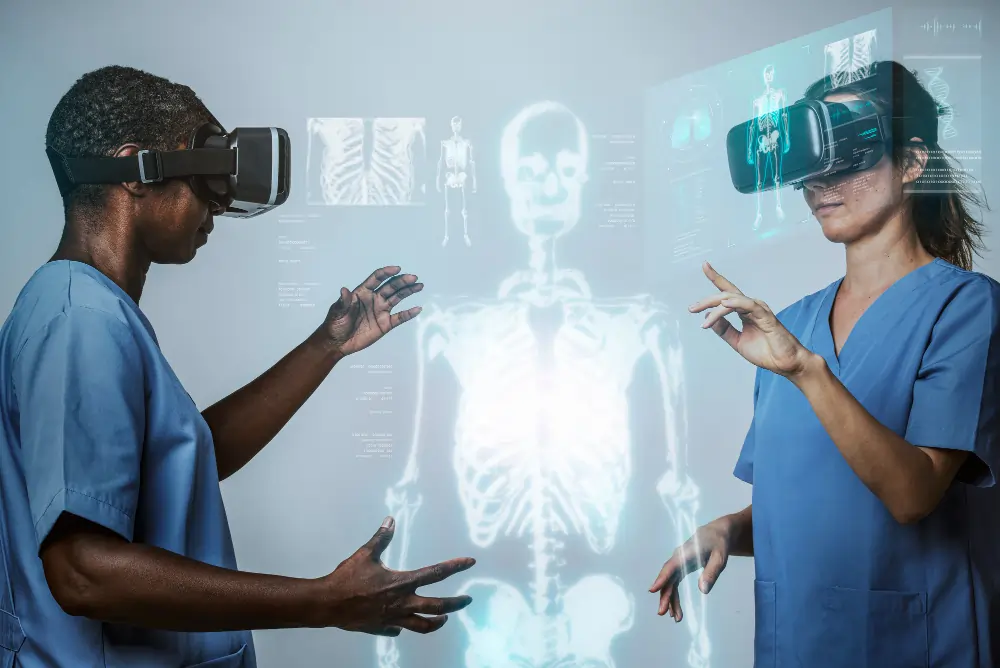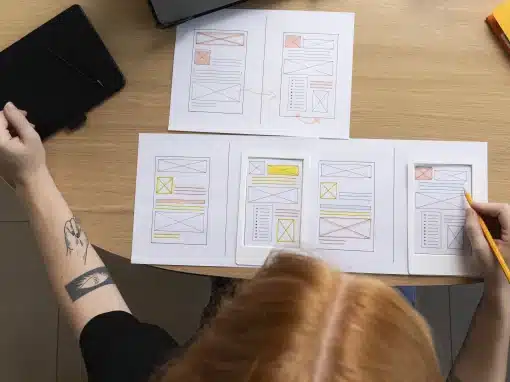Table of Contents
When two radiologists set out to make medical imaging easier to understand, they needed a partner that could help them build their vision from the ground up.
In this post, we take a closer look at how Mediphany, a radiology-focused startup, turned an innovative idea into a functional, AI-powered platform with the help of Scopic.
This journey is documented not only through their case study but also through the words of their CEO, Dr. Josh Polster, who shared his experience in a recent testimonial video:
Explaining Radiology to Non-Experts
Mediphany’s goal was simple, yet impactful: to create video-based radiology reports that help patients, lawyers, and non-radiologists actually understand what’s on a scan.
Their idea required a powerful software backbone, seamless data intake from external users, and a clear, user-friendly interface.
As non-technical founders, they needed a team that could provide full-cycle development, from infrastructure to AI.
“Without Scopic, we really would have had no way to start our company.”– Dr. Josh Polster, CEO of Mediphany
From MVP to Scalable Software
Scopic helped Mediphany develop its platform in phases, starting with the core functionality and iterating through feedback.
From frontend and backend development to testing and DevOps, the entire technical infrastructure was built in close collaboration.
“They really are a major part of our organization. I think of them as an extension of our business, and a critical one.”
This collaborative structure allowed Mediphany to test ideas, pivot when needed, and adapt to real market demands.
Using AI to Enhance Radiology Reports
One of Mediphany’s standout innovations is their use of AI for speech recognition and text categorization. This enabled them to automatically generate structured reports from video explanations (a major improvement in speed and accessibility).
“We engaged with them on AI… for categorizing and sorting text that is spoken to help us create radiology reports in a much more efficient and intuitive manner.”
Our custom AI development services didn’t just enhance the user experience – they reduced manual work, increased consistency, and opened up new use cases, especially in legal and compensation-related cases.
Communication, Testing & Trust
Working with Scopic meant having access to:
- A dedicated team with project management
- Frontend and backend devs
- DevOps support
- QA testing and iteration
- Marketing team for outreach and growth
“They have a great testing team, so when it’s our turn to test the product, things are already working very smoothly.”
Regular meetings, responsive feedback loops, and a clear sense of ownership made this collaboration not just functional but strategic.
Designing the Future with Figma Prototypes
In the latest phase of their journey, Mediphany is using Figma to design and test a new module before coding begins. This clickable prototype approach lets them collect user feedback, refine ideas, and reduce rework down the road.
“It’s helping us to think through the project… and do it with the most efficient use of resources possible.”
Final Thoughts
Mediphany’s journey is a prime example of how the right partnership can take a great idea and turn it into something scalable, impactful, and user-centric.
“Take their advice. Flesh things out. We couldn’t have done it without them.”
Whether you’re launching a new product or enhancing an existing one with AI, Scopic helps non-technical founders go from concept to code and beyond.
Want to build your own AI-powered product? Start with a free consultation from Scopic.

About Mediphany Radiology AI Overview
This guide was authored by Angel Poghosyan and reviewed by Tim Burr, Founder and CEO of Scopic.
Scopic provides quality and informative content, powered by our deep-rooted expertise in software development. Our team of content writers and experts have great knowledge in the latest software technologies, allowing them to break down even the most complex topics in the field. They also know how to tackle topics from a wide range of industries, capture their essence, and deliver valuable content across all digital platforms.
Note: This blog’s images are sourced from Freepik.





